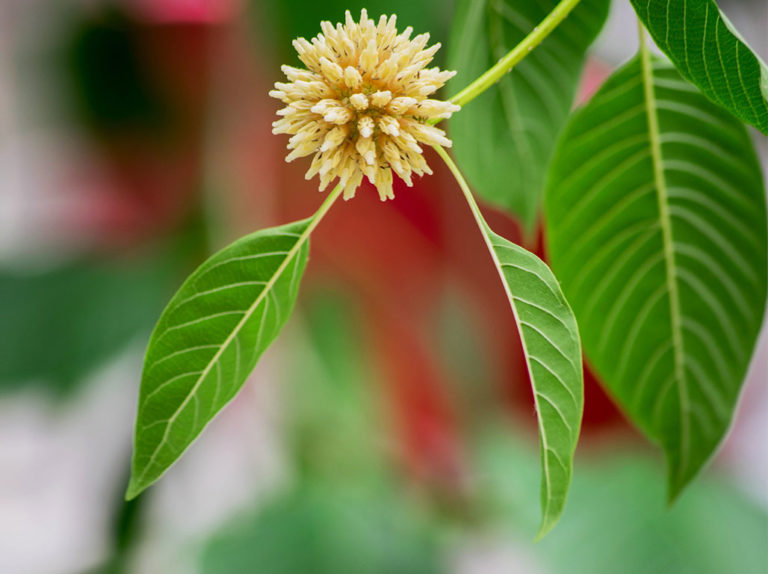Kratom is a tropical tree native to Southeast Asia, with leaves that contain psychoactive (mind-altering) opioid compounds. The tree’s bitter leaves are consumed for mood-uplifting effects and pain relief and as an aphrodisiac. It is more commonly abused in the Asia Pacific region than the United States.
What Does It Look Like
Fresh or dried leaves. It is sometimes sold as a green powder in packets labeled “not for human consumption.” It is sometimes sold as a liquid extract or gum. Also sold in pill form (gel capsules).
How Is It Used
Chewing whole leaves, eating leaves mixed with food or brewing the dried or powdered leaves as a tea. Sometimes the leaves are smoked. Mostly abused by oral ingestion in a pill form.
What Are The Street Names/Slang Terms
Herbal Speedball, Biak-biak, Ketum, Kahuam, Ithang, Thom
What Are The Short Term Effects
At low doses can produce stimulant effects with users reporting increased energy, sociability and alertness. At higher doses users experience sedation, euphoria and decreased pain.However, there can be uncomfortable and sometimes dangerous side effects. Reported health effects of kratom use include sensitivity to sunburn, nausea, itching, sweating, dry mouth, constipation, increased urination and loss of appetite. Kratom by itself is not associated with fatal overdose, but commercial forms of the drug are sometimes laced with other compounds that have caused deaths.
What Are The Long Term Effects
Long-term users of kratom have experienced anorexia, weight loss, insomnia, dry mouth, frequent urination and constipation. Psychotic symptoms (hallucinations, delusion, and confusion) have been reported in some users at high doses. Consumption can lead to psychological and physical addiction. Like other opioids, kratom may cause dependence (feeling physical withdrawal symptoms when not taking the drug), and some users have reported becoming addicted to kratom. Withdrawal symptoms include: muscle aches, insomnia, irritability, hostility, aggression, emotional changes, runny nose and jerky movements. Behavioral therapies and medications have not specifically been tested for treatment of kratom addiction. In recent years, some people have used kratom as an herbal alternative to medical treatment in attempts to control withdrawal symptoms and cravings caused by addiction to other opioids or to other addictive substances such as alcohol. There is no scientific evidence that kratom is effective or safe for this purpose. Evidence-based, approved medications exist and are effective at treating opioid use disorders.
Source: National Institute on Drug Abuse (NIDA); Drug Enforcement Agency (DEA)
If you need help with addiction, visit Recovery Guidance for a free and safe resource to find addiction and mental health professionals near you.





















